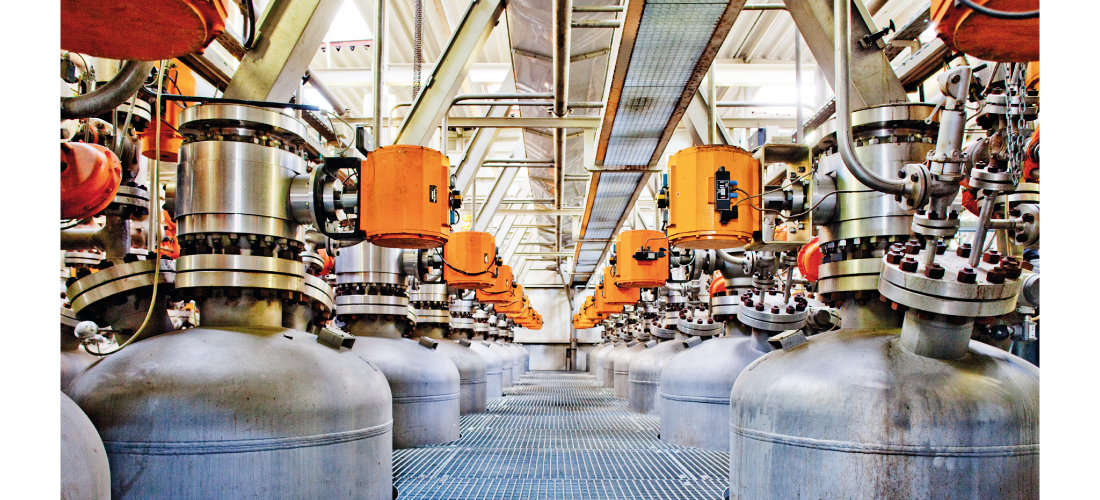
Decaffeinating with natural liquid carbon dioxide, behind the doors of the cr3 company
CR3 is headquartered in Bremen, Germany. The company is the only plant in the world to use subcritical CO2 to decaffeinate coffees. Jan Schwital, Joshua Ruiz and Oliver Suesse-Herrmann, respectively Managing Director, Head of Specialty Coffees and Quality Director, explained everything to us.
What's the difference between supercritical and subcritical?
In nature, matter can be found in 3 different forms: solid, liquid and gaseous. But there are also other, more exotic states that are only possible for certain materials under certain conditions.
Carbon dioxide (CO2) is called a "pure gas" because it consists of a single molecule. It exists in a gaseous state under atmospheric conditions (1.013 bar at sea level; temperature 15°C). In fact, the air we breathe is naturally composed of 0.04% carbon dioxide.
It is by changing pressure and temperature data that a state can be modified. For example, by applying specific conditions, we can change CO2 from a gaseous to a liquid state. We call this phenomenon liquefaction. Of course, this is reversible, and CO2 can then return to its original state, known as vaporization.
Supercritical CO2
There is also an additional state, called the supercritical state. In this state, CO2 is still a liquid, but has the physical and chemical properties of a gas. This in-between state is only possible at pressures above 73.8 bar and temperatures above 31°C. This supercritical CO2 is commonly used to extract caffeine in decaffeinating processes.
Indeed, in these particular conditions, CO2 with its specific properties, between gas and liquid, will enable it to penetrate deep into the green coffee beans (gaseous state) and dissolve between 97 and 99% of the caffeine (liquid state).
Subcritical CO2
This is CR3's innovation. Unlike other plants, CR3 uses a different state, called the sub-critical or liquid state. Unlike supercritical CO2, subcritical CO2 requires lower temperature and pressure conditions (23°C and a pressure of between 70 and 80 bar), which is a major advantage as it does less harm to the other components of the green coffee and preserves an optimal aromatic profile.
Liquid carbon dioxide has excellent caffeine selectivity and therefore quality properties. High caffeine selectivity comes at the expense of low solvency, resulting in long extraction times of up to 7 days.
The 4-step process
Steam treatment
The green coffee is first placed in a vat and treated with steam. This step is a prerequisite for decaffeination, and prepares the coffee beans by swelling them to make them more permeable for extraction with liquid CO2.
The beans are then brought into contact with liquid CO2 under subcritical conditions.
During extraction, the liquid CO2 continuously extracts the caffeine from the coffee beans. The caffeine is then dissolved in the liquid CO2. Because CO2 has a very high selectivity for caffeine, virtually no other components are dissolved, resulting in very high quality.
CO2 evaporation
The flow of liquid CO2 then transports the caffeine into a separate tank, where the CO2 is evaporated back into a gaseous state.
As a result, the CO2 loses its affinity for the caffeine. The purified CO2 is then converted back to a liquid state (by compression) and returned to the decaffeination tank to begin a new cycle.
In search of 0.08% of caffeine
Finally, once a caffeine content of less than 0.08% has been reached (European regulations impose a maximum caffeine content of 0.1% for decaffeinated coffees), the beans are taken out and dried under vacuum and mechanical drying.
How is coffee decaffeinated at CR3?
The advantages of this process
The main advantage of this process is that sub-critical extraction does not use high temperatures, which does not damage the quality of the coffee and preserves its identity.
The process uses no solvents, and is therefore free from any synthetic chemical compounds, enabling the decaffeination of certified organic coffee.
Although the process is energy-intensive, this is offset by the fact that its energy efficiency is optimized. What's more, by using this process on natural gas, the company generates electrical energy that is fed into the city of Bremen's power grid.
The pure caffeine extracted by CR3 is then resold to the pharmaceutical industry or used in the composition of energy drinks.
Did you like this article? Share it with your community:
